
Welcome to albuquerquesnakes.com! I am David, a snake enthusiast living in Albuquerque, NM. Many people don't know that Albuquerque is in fact full of snakes! You just need to know where to find them - they can often be shy and elusive. Some New Mexico snake species are more common outside of the city limits, in different parts of Bernalillo County NM, but many types of snakes are indeed common in the more urban parts of Albuquerque. This guide is meant to help educate you about the beautiful snakes of Albuquerque, and to help you identify the most common snakes of Albuquerque, as well as the venomous snakes of Albuquerque that you should learn to recognize and avoid. If you want more detail, click here for my complete list of ALL snake species in Albuquerque. Remember the following:
- Most snakes of Albuquerque are harmless and don't want to encounter you
- Venomous snakes exist but are uncommon in Albuquerque, New Mexico
- Snakes eat rats and mice and are a valuable part of the New Mexico ecosystem
- Never kill a snake - if you leave a snake alone, it will leave you alone.
Common Snake Species in Albuquerque
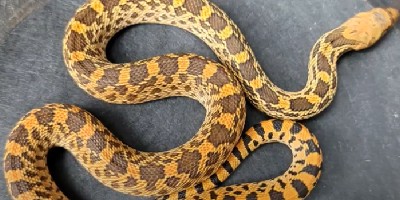 Bullsnake:
Bullsnakes are one of the most common snakes in New Mexico, these are large, non-venomous snakes and usually as long as 48 to 72 inches, some can grow to about 96 inches. Bullsnakes are one of the longest snakes found in North America, they are heavy-bodied with a yellow or brown base color and reddish blotches and black bands on the tail. Bullsnakes are also known to come in many color variations including, black, white, or brown. These are non-venomous snakes but when cornered they will flatten their head and shake their tails with a rattling sound that can be mistaken for that of a rattlesnake, and they will bite.
Bullsnake:
Bullsnakes are one of the most common snakes in New Mexico, these are large, non-venomous snakes and usually as long as 48 to 72 inches, some can grow to about 96 inches. Bullsnakes are one of the longest snakes found in North America, they are heavy-bodied with a yellow or brown base color and reddish blotches and black bands on the tail. Bullsnakes are also known to come in many color variations including, black, white, or brown. These are non-venomous snakes but when cornered they will flatten their head and shake their tails with a rattling sound that can be mistaken for that of a rattlesnake, and they will bite.
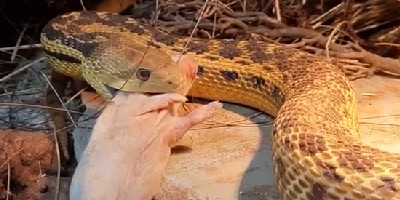 Gopher snake:
hese snakes can grow as long as 84 inches and they are one of the longest snakes native to New Mexico. Gopher snakes usually come with brown, red, or black blotches on a yellowish-tan background. These snakes are very similar to bullsnakes and Sonoran gopher snakes, with similar patterns and coloring, they are sometimes difficult to tell apart.
Gopher snake:
hese snakes can grow as long as 84 inches and they are one of the longest snakes native to New Mexico. Gopher snakes usually come with brown, red, or black blotches on a yellowish-tan background. These snakes are very similar to bullsnakes and Sonoran gopher snakes, with similar patterns and coloring, they are sometimes difficult to tell apart. Coachwhip:
The coachwhip or red racer is a slender snake with a tan or gray body and a pinkish hue towards the rear. These snakes come in a variety of colors, sometimes they have black or dark brown upper bodies and light gray or pink towards the tail, and sometimes they have a single gray color. Coachwhips can also have stripes or blotches and they can reach 50 to 72 inches in length.
Coachwhip:
The coachwhip or red racer is a slender snake with a tan or gray body and a pinkish hue towards the rear. These snakes come in a variety of colors, sometimes they have black or dark brown upper bodies and light gray or pink towards the tail, and sometimes they have a single gray color. Coachwhips can also have stripes or blotches and they can reach 50 to 72 inches in length. Ring-necked snake:
These are slender black or gray snakes with a yellowish-orange ring around the neck, and their bellies are often the same color as the ring on the neck. The length of the snakes varies, prairie ring-neck snakes will grow no longer than 15 inches while regal ring-neck snakes can grow to about 34 inches in length. Ring-necks are mostly found on dry rocky hillsides and grasslands.
Ring-necked snake:
These are slender black or gray snakes with a yellowish-orange ring around the neck, and their bellies are often the same color as the ring on the neck. The length of the snakes varies, prairie ring-neck snakes will grow no longer than 15 inches while regal ring-neck snakes can grow to about 34 inches in length. Ring-necks are mostly found on dry rocky hillsides and grasslands.
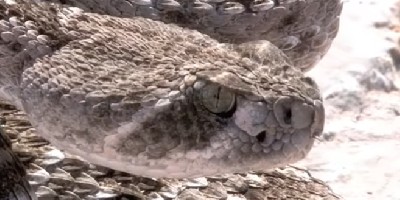 Chihuahuan hook-nosed snake:
This is a gray or grayish-brown snake with dark brown or black blotches along the length of its back and a slightly upturned nose. The Chihuahuan hook-nosed snake is a small stout snake that can grow up to 16 inches in length but usually measures between 7 to 11 inches. Although these snakes are usually gray or brown some will have a pinkish or pale yellow color with small black blotches. The Chihuahuan hook-nosed snake is usually found in sandy habitats near a water source.
Chihuahuan hook-nosed snake:
This is a gray or grayish-brown snake with dark brown or black blotches along the length of its back and a slightly upturned nose. The Chihuahuan hook-nosed snake is a small stout snake that can grow up to 16 inches in length but usually measures between 7 to 11 inches. Although these snakes are usually gray or brown some will have a pinkish or pale yellow color with small black blotches. The Chihuahuan hook-nosed snake is usually found in sandy habitats near a water source.
Venomous Snake Species in Albuquerque
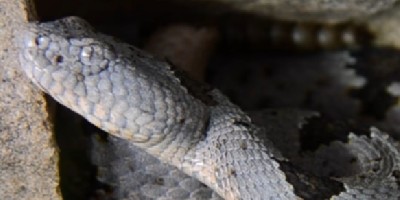 Eastern rock rattlesnake:
This is a heavy-bodied greenish-gray or dark brown rattlesnake mostly found in mountains and rocky terrains in southern New Mexico. These snakes are usually no longer than 32 inches and will slightly vary in color, the color of each snake will reflect its natural environment.
Eastern rock rattlesnake:
This is a heavy-bodied greenish-gray or dark brown rattlesnake mostly found in mountains and rocky terrains in southern New Mexico. These snakes are usually no longer than 32 inches and will slightly vary in color, the color of each snake will reflect its natural environment. 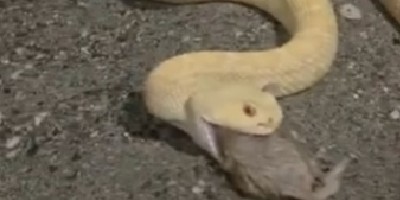 Western diamondback rattlesnake:
This is the most commonly sighted rattlesnake in New Mexico and it’s also one of the largest rattlesnake species, second to the eastern diamondback rattlesnake. The western diamondback is often gray or light brown in color with black and white rings on the tail. These snakes are usually between 48 to 72 inches long and some can grow to about 85 inches.
Western diamondback rattlesnake:
This is the most commonly sighted rattlesnake in New Mexico and it’s also one of the largest rattlesnake species, second to the eastern diamondback rattlesnake. The western diamondback is often gray or light brown in color with black and white rings on the tail. These snakes are usually between 48 to 72 inches long and some can grow to about 85 inches.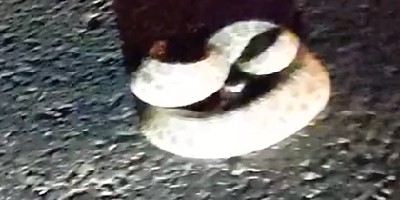 Western prairie rattlesnake:
These rattlesnakes are evenly distributed across New Mexico and are mostly found in grasslands and pine forests. The western prairie rattlesnake is greenish-gray, olive green, or greenish-brown with light-colored rings on its tail, and usually measures from about 35 to 45 inches
Western prairie rattlesnake:
These rattlesnakes are evenly distributed across New Mexico and are mostly found in grasslands and pine forests. The western prairie rattlesnake is greenish-gray, olive green, or greenish-brown with light-colored rings on its tail, and usually measures from about 35 to 45 inches
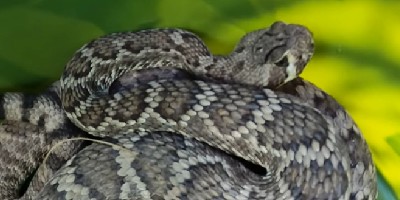 Mojave rattlesnake:
This is a greenish-gray or olive green rattlesnake with a white belly found mostly in low grassland habitats. The color of the Mojave will vary from brown to different shades of pale green with dark diamond-like patterns and closely resembles the western diamondback rattlesnake. Mojave rattlesnakes measure between 24 to 48 inches.
Mojave rattlesnake:
This is a greenish-gray or olive green rattlesnake with a white belly found mostly in low grassland habitats. The color of the Mojave will vary from brown to different shades of pale green with dark diamond-like patterns and closely resembles the western diamondback rattlesnake. Mojave rattlesnakes measure between 24 to 48 inches.
 Black-tailed rattlesnake:
These rattlesnakes are mostly found in rocky and mountainous areas and sometimes in lower desert habitats. They vary in color and are usually dark gray, yellowish-brown, or yellowish-green with dark blotches and black or dark brown tail. These snakes can grow to about 30 to 42 inches in length.
Black-tailed rattlesnake:
These rattlesnakes are mostly found in rocky and mountainous areas and sometimes in lower desert habitats. They vary in color and are usually dark gray, yellowish-brown, or yellowish-green with dark blotches and black or dark brown tail. These snakes can grow to about 30 to 42 inches in length.
 Massasauga rattlesnake:
This small stout rattler is found in desert grasslands across southern, central, and eastern New Mexico. The massasauga can be black, brown, or tan with rows of small dark spots along its sides, these snakes are usually 18 to 30 inches long.
Massasauga rattlesnake:
This small stout rattler is found in desert grasslands across southern, central, and eastern New Mexico. The massasauga can be black, brown, or tan with rows of small dark spots along its sides, these snakes are usually 18 to 30 inches long.
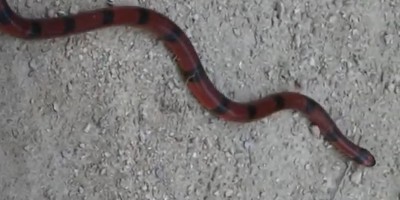 Coral snakes:
These are tri-colored snakes with red, black, and yellow bands across the length of their bodies. These snakes bear a close resemblance to the non-venomous milk snake and scarlet kingsnake but are extremely poisonous. On the coral snakes, the red bands are next to the yellow bands while the red bands are next to black bands on the milk and scarlet kingsnakes.
Coral snakes:
These are tri-colored snakes with red, black, and yellow bands across the length of their bodies. These snakes bear a close resemblance to the non-venomous milk snake and scarlet kingsnake but are extremely poisonous. On the coral snakes, the red bands are next to the yellow bands while the red bands are next to black bands on the milk and scarlet kingsnakes.
If you're unsure, you can email me a photo of the snake at info@albuquerquesnakes.com and I will email you back with the snake's species. If you found a snake skin, read my Found a Skin? page, and you can email me a photo of the skin, and I'll identify the snake for you. If you need professional Albuquerque snake removal help, click my Get Help page, or see the below website sponsor I found, who provides that service.
Remember, the term is not poisonous snakes of Albuquerque, it's venomous snakes of Albuquerque. Poison is generally something you eat, and venom is injected into you. That said, dangerous snakes are very rare in Albuquerque. The few venomous snakes of Bernalillo County are rarely seen. But they are commonly misidentified, so learn about all the snake species of Albuquerque in order to correctly identify them. These snakes are usually also found in the surrounding towns of Santa Fe, Los Ranchos de Albuquerque, Tijeras, South Valley, Sandia Park, North Valley, Cedar Crest, Carnuel, Sedillo, Chilili, Pajarito Mesa, San Antonito, Cedro, and the surrounding areas.
Read our article about:
Do Snake Fences Work?
albuquerquesnakes.com domain and hosting costs made possible by the generous support of this sponsor:
